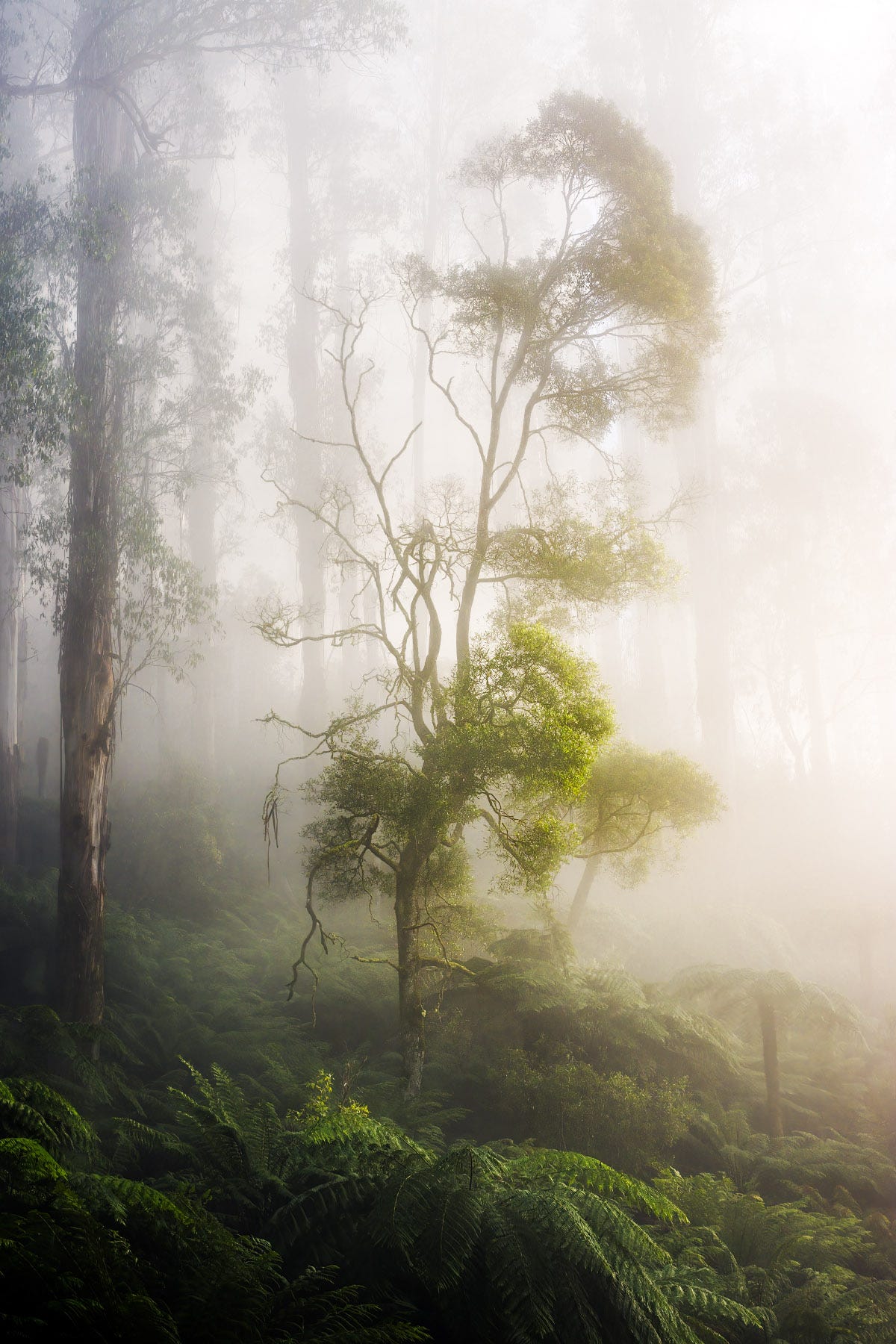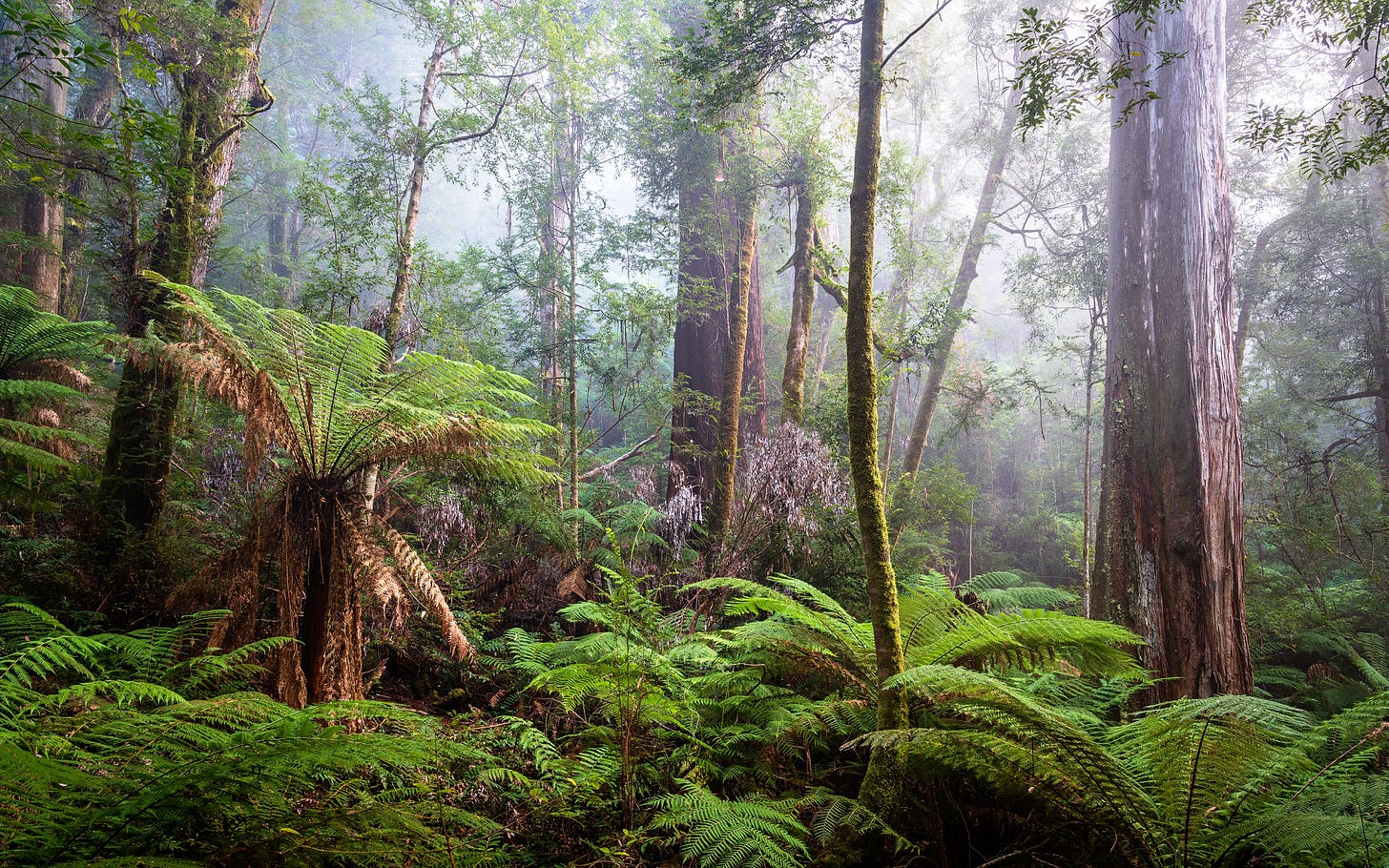What makes a winning image?
Or at least a good photograph
Hi, I am a landscape and nature photographer based in Melbourne, Australia and enjoy using my camera to explore our remaining wild places and better connect with nature.
My inbox and social media feed are currently being inundated with offers to participate in a variety of photography competitions. It seems ‘tis the season.
It’s my fault, every year I enter a couple of competitions and so I am on the algorithm’s watch list. But I do think entering competitions can be a useful way to learn – but only if the competition provides feedback and transparency on an image’s progress through the stages and its final scoring.
I will give a plug for the Natural Landscape Photography Awards (NLPA) here. Their scoring is quite transparent and has provided me a way to measure progress over time. Entries are currently open until the end of May (link).
I would also add that it is important that you, the photographer, do not take them too seriously. Although there are winners, these are not really competitions in the sense that the “best” photograph wins – the judging is far too subjective for that.
For example, I entered the photograph below in the 2023 NLPA competition and it did very well, getting into the Final live judging round (that is, the top 157 images). One of the five judges gave it 3 out 10, another gave it 10 out of 101. Neither were wrong – it is how they responded to the image. It just emphasises that the judges’ scores are only their assessment of the image (reduced to a number) and are not a measure of your self-worth.
As I go through my catalogue and try and decide which images to enter, I have been reflecting on what makes a good photo in the eyes of a judge?
To be clear, I am not a judge so can only speculate. To be successful in a competition, the image needs to appeal in both the early rounds, when it needs to have enough instant attraction to progress based on a momentary inspection, and in the final rounds, when it needs to have enough substance to withstand close engagement and find advocates in judges who will argue in favour of it.
It is very useful to listen to judges talk about how they assess and engage with an image. Many have a high degree of visual literacy and are very articulate in describing what they are seeing. They have also seen a lot of images over the course of their career.
Before I enter an image, it needs ideally to be strong in each of the three elements outlined below. While each element builds on the ones before it, all are equally important.
1. Foundations
My starting point is that the photograph needs to have an interesting subject captured in an interesting way that will provide the foundations for a captivating image. I put this first because these foundations are largely locked in at capture and the artistic decisions are within my control.
The photo needs to be a new take on the subject – something that a jaded judge does not see every day.
The composition must effectively direct the eye around the frame.
Technically sound, both in-camera and post-processing – it doesn’t need to be “perfect” but does require attention to detail and no obvious mistakes.
2. Light
But these foundations are not enough to get far in a competition. Without doubt, for an image to stand out, it needs great light. This is not necessarily spectacular, “banger” light – it needs to be appropriate for the image.
While a spectacular sky in a landscape photograph may make an image stand out on social media, the judges have seen it all before and this kind of light can result in a superficial photo.
The judge should see that the light reveals something about the subject.
It should flatter the subject.
While we can maximise the chances of finding good light, as a landscape photographer it is beyond my control. I have sometimes entered an image that has quite flat light (because I am enamoured with the image) but invariably these photos will not do well.
On the other hand, special light can really elevate an image beyond a merely competent photograph. The image below is a new photo that I am considering entering in a competition. I think the image does a good job capturing what was amazing (but fleeting) light.
3. Story
A really excellent photo needs to demand the viewer creates their own story.
A lot of great landscape photos (mine as much as anyone) use composition and light to create a feeling about the beauty/power/awesomeness of nature. Invoking a feeling is good – it makes viewing the image an enjoyable experience. But it is not enough to engage the judges at the pointy end of a competition.
Ideally, I want the photo to tell a multi layered story (more like great literature than a formulaic novel in a crime series); one that poses new questions or creates new understanding with repeat viewing.
This of course is a very high bar, and one that I have no great insights on how to achieve consistently. There are some approaches that can introduce a deeper meaning, like pareidolia (the tendency to perceive a specific, often meaningful image in a random or ambiguous visual pattern), abstraction or ambiguity. Personally, I like to retain the complexity in nature like the rainforest image above.
Even better if the image haunts you long after first seeing it. For example, I recently came across the photograhy of Evgenia Arbugaeva (link). Her beautiful photos from her homeland, the Republic of Yakutia in Siberia, pose so many questions - I can’t help but wonder about the story behind each one.
The photo of Piemans Falls below is my most successful competition image as winner of the 2023 NLPA Water Worlds category. In addition to the beautiful scene and the great early morning light, I think it is the balance between the trees and the waterfall that tells an interesting story of water in the landscape. Perhaps this was the difference between this image and the other great photos entered?
While I consider these three elements in deciding whether or not to enter a photo, I really don’t know how to create the magic of a winning image. My “method” to date is to take a lot of photos to improve technical skills, experiment with composition, get out in the field as often as possible with the chance of good light and take photos with intention.
Ansel Adams reputably said that 12 significant photographs in any one year is a good crop. If I could get one great photograph a year, I’d take that.
I would pay good money to get a critique from the low judge.





A really interesting article James and some beautiful photographs - congratulations on your NLPA success.
I agree with your points about what makes a successful image although I tend not to analyse my images in that much depth before I enter them into competitions. However having said that my most successful image to date (category runner up in LPOTY 2021) definitely had an obvious story to it which I felt gave it an emotional edge.
At the end of the day it is all very subjective and the key thing for me is not to take it too seriously. As long as I am happy with my work and feel I am producing images that are relevant and interesting then that is all that matters.
These points are very helpful! They may not be a formula that is repeatable every time, but I believe keeping them in mind will definitely improve my photos! Thanks!